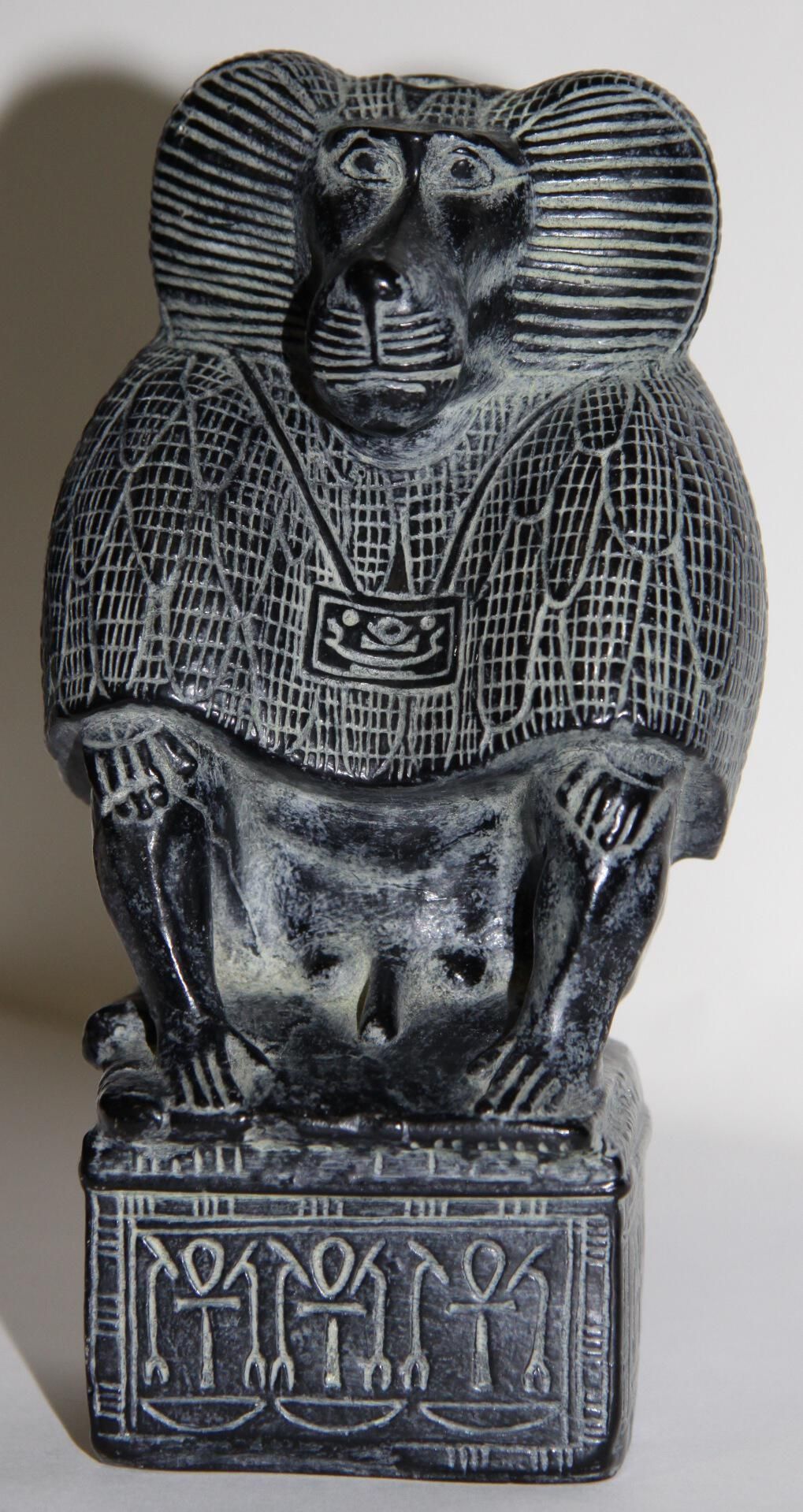Thoth as a Baboon
Name/Title
Thoth as a BaboonEntry/Object ID
08EG15130Description
The baboon head has mostly horizontal incised lines on either side of the face that are parallel to each other. The Baboon is wearing a cloak that covers the upper body. This cloak is incised to form little rectangles. There are other lines on top of this that are rounded to make it look like scales laying on each other. Hanging from a necklace there is a large rectangle carved into the chest with a symbol inside of it. Hands are resting on the baboon's legs. It is seated on a platform that has a flat front and symbols repeat and are carved around the entire platform base. One of these symbols is an ankh, and another symbol was a scepter.Type of Sculpture
StatuetteArtwork Details
Medium
PlasterContext
Thoth is ascribed with wisdom, writing, and counsel. He settled disputes between the living gods and was connected to the souls of the dead. He was most commonly depicted with the body of a man and the head of an ibis, though he also took the form of a baboon. When Thoth is represented as a baboon, he symbolized the creatures that rose early with the sun, and therefore held to be connected to the sun god Ra. Baboons were a feature in early Egyptian festivals, and they later became important to the Early Dynastic Kings of Horus. Thoth was also depicted as a lunar god or as a messenger god. He came to be associated with Hermes in the Ptolemaic period (332-30 BCE).Made/Created
Date made
100 BCE - 1 BCETime Period
Ptolemaic DynastyEthnography
Culture/Tribe
Egyptian

